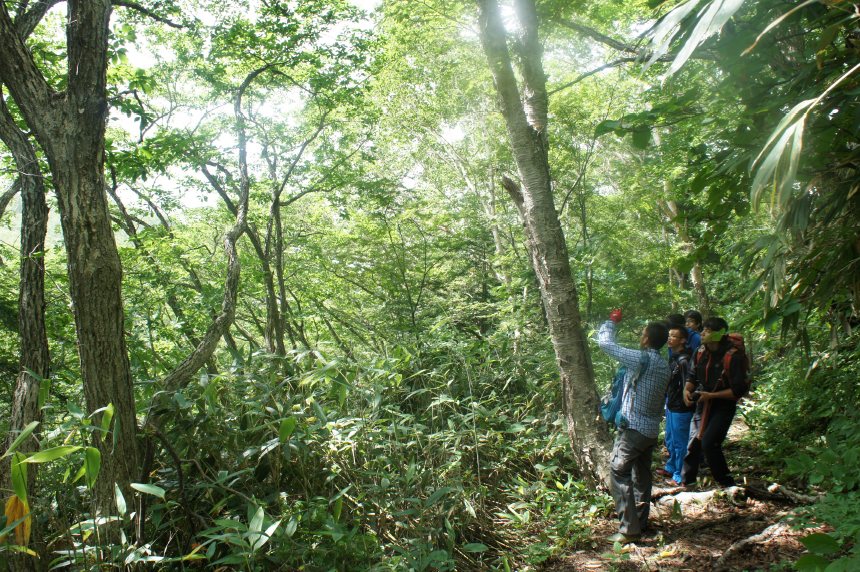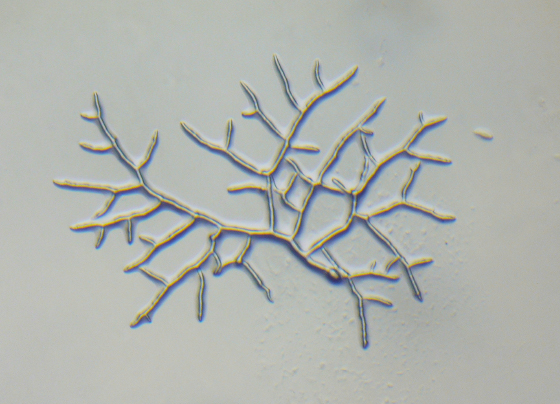Division for Understanding Mountains
In the Division for Understanding Mountains, our activities work to deepen our understanding of the natural environment in mountainous regions and its transition from the past to present and into the future based on the fields of biology and earth science. Currently, the natural environment in mountainous regions is facing numerous environment issues, including climate change and loss of biodiversity. In this division, we are engaged in education and research aimed at resolving these issues and the sustainable coexistence of nature and mankind.
Climate Change

Investigation scenery in the beech (Fagus crenata) forest
We are working on a broad range of issues related to climate change, including the fixed amount and circulation of carbon dioxide in forests, the melting of permafrost and soil erosion in Japan and around the world, and the water environment and resources at the headwaters in mountains. We hope to provide knowledge that will be beneficial to understanding the relationship between the climate and mountain environments and methods for its management.
Biodiversity
In terms of biodiversity, we are contributing to the understanding and development of this basic science through: the elucidation of the genetic diversity of trees in the Asian region, the investigation of the complex symbiotic pollination system between plants, pollinator, and microorganisms, the determination of the systematic taxonomy of fungi living in a various environments, the study of the biology of lichens, and by providing new knowledge regarding the systematic evolution and diversity of insects.

Germination of a spore of Phycomyces nitens (Mucoromycota)
Sporangiophore and spores of Phycomyces nitens (Mucoromycota)
Orphella sp. (Zoopagomycota, gut fungi of Plecoptera)
Punctelia borreri (Lichenized Ascomycota)
Budding cells of Metschnikowia sp.(Ascomycota, yeast)
Cladonia macilenta (Lichenized Ascomycota)
Cladonia macilenta (Lichenized Ascomycota)
Microstoma aggregatum (Ascomycota)
Rhopalomyces elegans (Zoopagomycota, nematoda trapping fungi)

